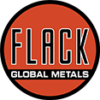Macro Flash Report
Producer Prices Index (PPI)
Takeaway:
In the first of this week’s two highly anticipated inflation data releases, Producer Prices topped forecasts. Over the last couple of months, it is becoming increasingly clear that the strong disinflationary trend from 2H23 which opened the door for interest rate cuts is running out of steam. The current level of interest rates is clearly restrictive, given the observed cooling in the labor market and broader economy, but more work will have to be done on prices before the FOMC can get serious about cuts.

PPI MoM increased by 0.5% in April, a sharp rise following a downwardly revised -0.1% in March, which was initially 0.2%, and surpassed the market expected 0.3%.
- Service prices rose by 0.6%, the highest since July and accounting for nearly 3/4ths of the overall increase, driven primarily by a 9% increase in portfolio management costs.
- Goods prices rose by 4% after a -0.2% decline in March, largely due to a 5.4% increase in gasoline prices.
- Other sectors, including machinery and equipment, wholesaling, residential real estate services, automobile retailing, and truck transportation of freight, also saw price hikes. Additionally, costs for diesel fuel, chicken eggs, electric power, and nonferrous metals increased.
PPI (Ex Food & Energy) MoM rose by 0.5%, a jump up from the downwardly revised prior month’s -0.1% fall, which was initially 0.2%, and much higher than the anticipated 0.2%
PPI YoY grew by 2.2%, accelerating from March’s revised 1.8%, which was initially 2.1%, and matched the projected 2.2% rise. This marked the steepest pace of growth in a year.
PPI (Ex Food & Energy) YoY increased by 2.4%, rising from the downwardly revised 2.1%, which was initially 2.4%, and slightly above the forecasted 2.3%. This marks the most in eight months.
These figures underscore the rising inflationary pressures, driven by increased costs across a broad range of services and goods. This upside surprise in Core PPI suggests underlying inflation trends will likely persist into the summer months.
That said, it is important to note that several categories in the PPI report which directly influence the Fed’s preferred inflation measure, the PCE, showed easing.
- For example, hospital outpatient care costs fell by -0.1%, airfares dropped by -3.8%, and physician care prices saw only a modest rise.


